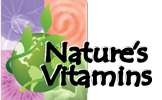A new large-scale study found that women who follow a vegan diet have a significantly higher risk of hip fracture, however supplementing with Vitamin D and Calcium removes this increased risk.
Data from a large National Cancer Institute funded cohort study, The Adventist Health Study 2 (AHS-2), was used in this particular study. The AHS-2 overall was used to examine the relationship between health outcomes and lifestyle. Over 96,000 individuals in North America were recruited between 2002 and 2007 to participant. The current study’s participants are limited to non-Hispanic postmenopausal and peri-menopausal women and men over the age of 45. After all the needed exclusions, a cohort of almost 35,000 individuals (almost 19,000 women and 16,000 men), were chosen.
At the onset of the study participants were required to complete a comprehensive lifestyle survey which included a FFQ (validated food frequency) questionnaire. Participants were than grouped into 5 dietary:
Vegan
Lacto-ovo-Vegegarian (LOV)-Eat eggs and dairy but don’t eat meat or fish
Pesco-Vegetarian-Eat fish, dairy, and eggs, but don’t eat meat
Semi-Vegetarian-Eat fish/meat once a week or less
Nonvegetarian(NVEG)
Follow up questionnaires were mailed out to participants biennially. Questionnaires included a question asking participants if they had experienced any broken bones (fractures) of the hips or wrists anytime after 2001. Using the Nutrition Data System for Research database and all relevant covariates known to be associated with bone health, nutrient intakes were compared across the 5 dietary groups.
Notable differences in lifestyle factors were seen in the 5 diet groups. Vegans showed the lowest use of hormone therapy and the highest amount of walking miles weekly. LOV’s were most likely to have a graduate degree and were the least likely to have ever smoked. Both Vegans and LOV’s usually had least amount of co morbidities when compared to the other 3 groups. NVEG’s were the most likely to have smoked and used alcohol and the least like to have graduate degrees.
Among the Vegan group, 32% supplemented with Calcium and Vitamin D which compared to 50% in the other groups. Magnesium intake was higher in the groups that supplemented with Calcium and Vitamin D than among participants who did not supplement at all or who took only one of the supplements. The average dosage of each supplement did not differ much between dietary groups.
The Vegans who did not supplement had an 11.2% lower dietary Vitamin D intake than the Vegans who did supplements and a 31% to 53% lower dietary Vitamin D intake than participants in either of the 4 other groups.
Total Vitamin D and total Calcium intakes were higher in women due to the higher amount of supplementation by women.
In men, due to hormonal and anatomic advantages, there was no correlation found between diet group and hip fracture risk, however in women, there was a significant association between diet group and hip fracture with a higher number of hip fractures seen in participants who ate a plant based diet. Actually Vegans had a 53% higher age adjusted risk of fractures than NVEG’s. Vegan women who supplemented with both Vitamin D and Calcium who found to have the same risk or a lower risk of fracture than NVEG’s or any other diet group.
These finding lead researchers to conclude that supplementation with Calcium and Vitamin D are important for fracture prevention.
Further studies are needed.
Now let’s talk a little about minerals:
Calcium is the most abundant mineral in our body. It is needed for the formation of bones and teeth, blood clotting, and for normal muscle and nerve activity. Actually adequate Calcium throughout one’s life may reduce the risk of Osteoporosis. Magnesium, another important mineral is needed for the normal functioning of muscle and nervous tissue and it also participates in the formation of teeth and bones. Approximately 99% of the body’s Calcium is found in structural form in the skeleton. The remaining 1% is used by soft tissues. Total body Magnesium content is approximately 25 g, 50% – 60% resides in bone. Obviously these numbers show the importance of these 2 minerals for bone health.
ASK US. WE KNOW. NOBODY KNOWS NUTRITION LIKE WE DO. NOBODY!








